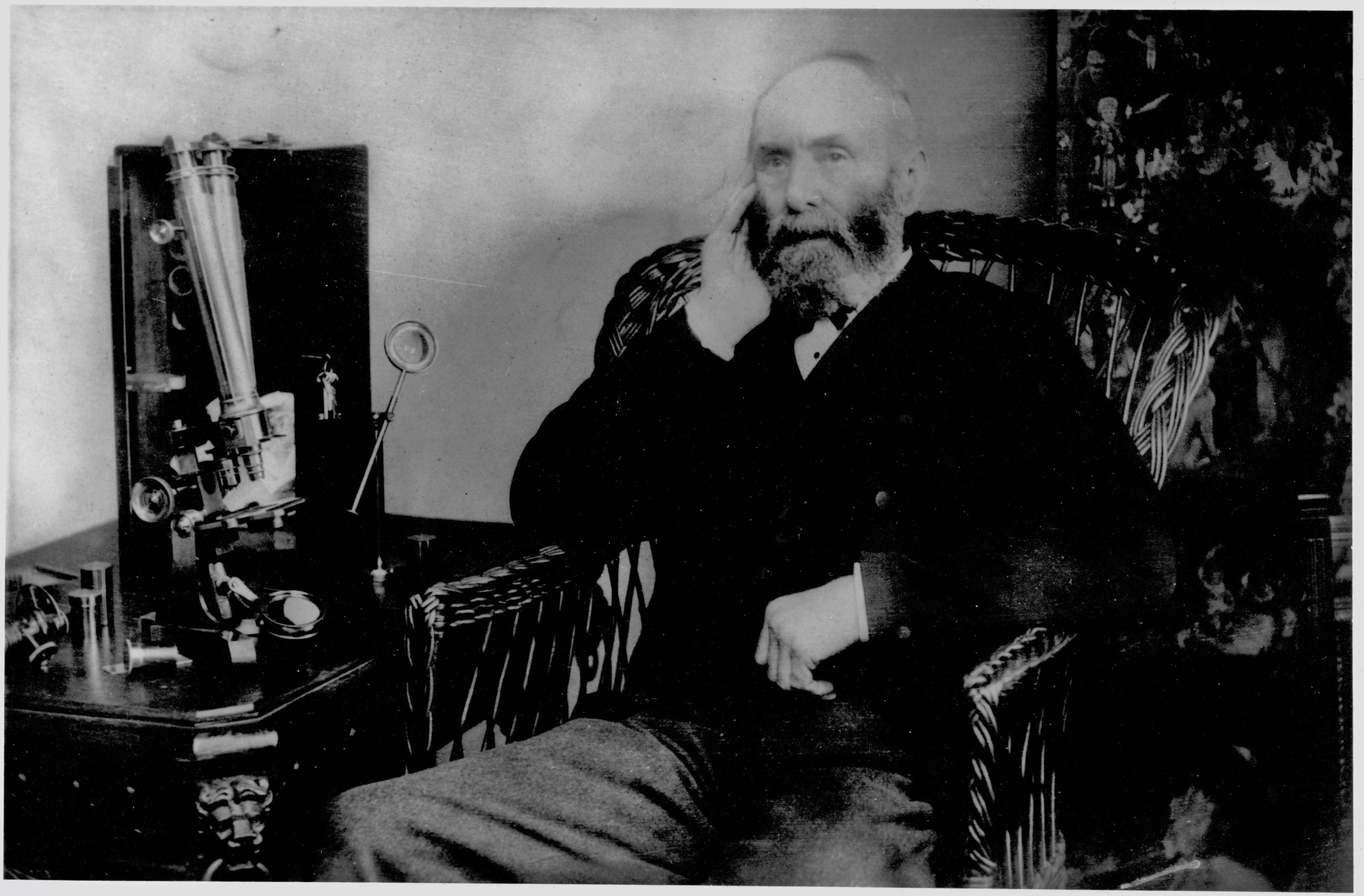The Founding.
The society was founded as Oldham Microscopical Society and Field Club in 1864 by James Nield, John Waddington and John Butterworth and a few friends who organised themselves into a society around December 1864.
Over the next few years the society expanded, including a number of noted individuals. In 1867 the Society broadened its scope and changed its title to the Oldham Microscopical Society, meetings at this time were held in Mr Pullinger's
Chemist shop in High Street until they transferred to the Lyceum in Union Street.
It is clear that during its early years the society had close links with the Oldham Field Naturalists' Society although accounts of this association vary. Around 1970, the Society changed its name to become the Oldham Microscopical and Natural History Society in order to better reflect the interests of its members.
James Nield
James Nield, (1825-1895). a founder member and long serving president of the society, did much to foster the cause of natural science in Oldham.
He was a publisher and lithographic printer who, with his sons, operated a business centred on Radcliffe Street, Oldham. He was an excellent writer, which is evidenced by his many contributions to journals and newspapers.
In 1877 he published an account of “A Fortnight on the Grampians, in quest of Alpine Plants.” As a botanist his knowledge was wide, embracing both flowering plants and also cryptogams. He was the town’s foremost geologist and his local knowledge and geological treasures were made extensive use of by Prof. Williamson in his research on the flora of the Lancashire coalflelds.
On October 5th, 1889, the society formally accepted an extensive Herbarium of British Plants presented by Mr.James Nield. It was stated at the time that the collection represented 86 out of the 93 Natural Orders recorded in the last edition of the London Catalogue and comprised specimens belonging to 426 genera, and 957 species, being nearly two thirds of the British Flora

James Nield with the Society's first purchased microscope


